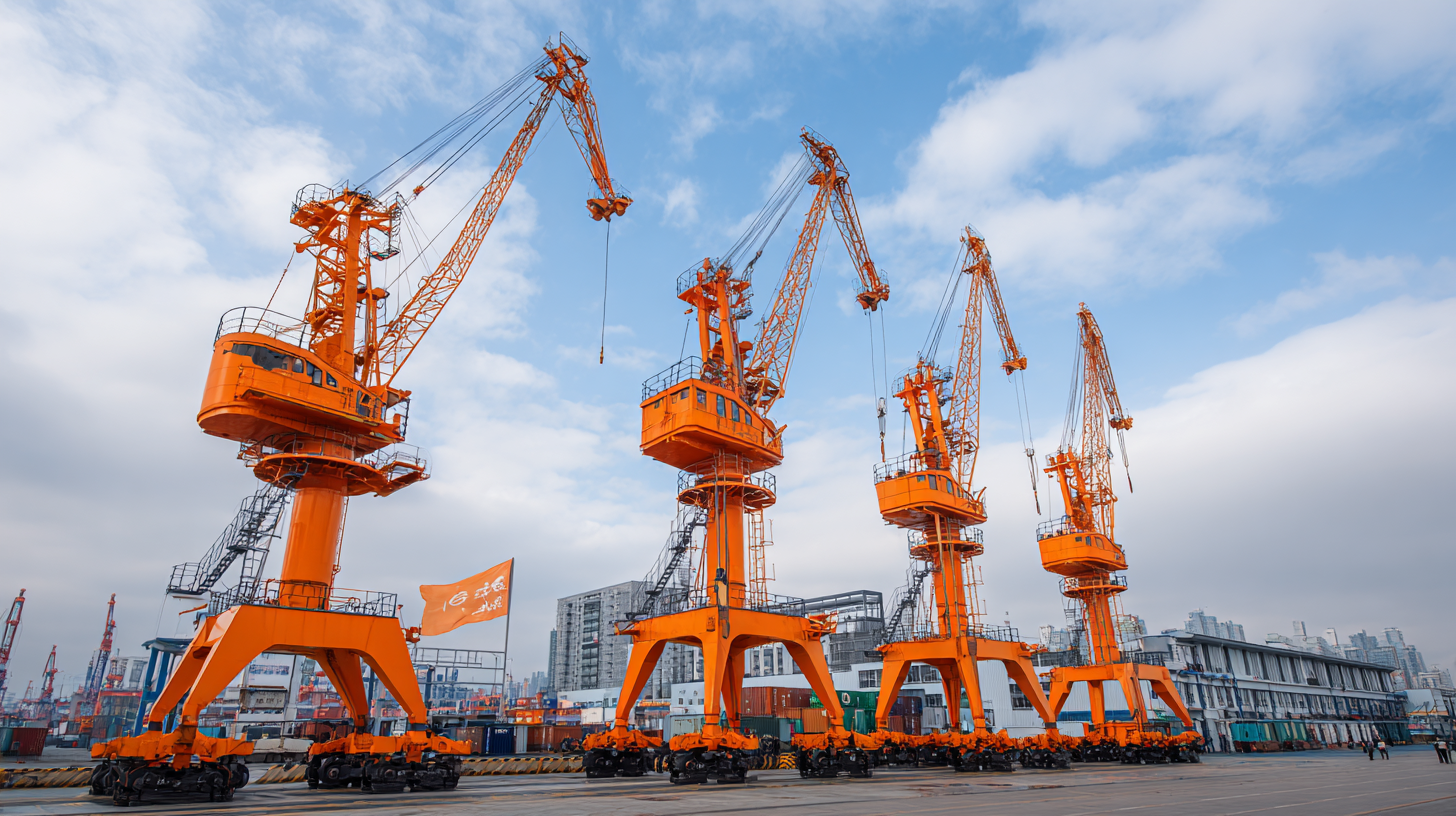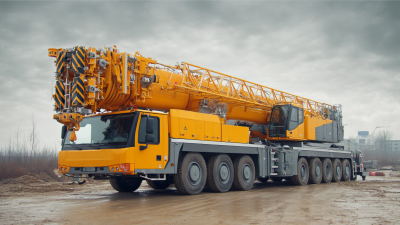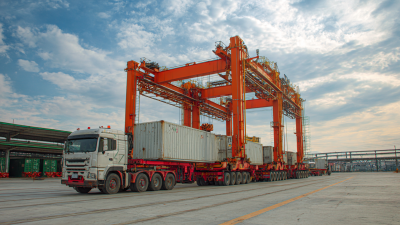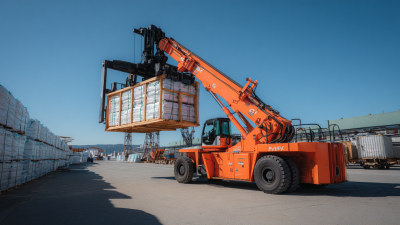Leave Your Message
-
Phone
-
E-mail
-
WhatsApp
As global trade continues to evolve, the demand for innovative lifting solutions becomes increasingly critical. The upcoming 2025 China Import and Export Fair, known as the 138th Canton Fair, presents a significant opportunity for industry stakeholders to explore the potential market for Telescoping Cranes. These versatile machines, characterized by their extendable booms that allow for enhanced reach and flexibility, are poised to cater to a wide range of applications across various sectors, including construction, manufacturing, and logistics. With China's robust economic growth and commitment to infrastructural development, the fair serves as a strategic platform for manufacturers, distributors, and end-users to engage with the latest technology and discover the advantages of Telescoping Cranes. This exploration not only highlights the operational efficiencies these cranes bring but also identifies emerging market trends and potential partnerships within the dynamic landscape of international trade.

The telescoping crane industry is poised for notable growth, driven by advancements in technology and an increasing demand for efficient construction solutions. As highlighted by the steady expansion anticipated in the overhead crane market, which is expected to reach $14.62 billion by 2025, the telescoping crane segment is likely to benefit similarly. The construction and infrastructure development sectors in China continue to flourish, supported by government initiatives aimed at enhancing urban environments and industrial capabilities.
Additionally, the global trends in related industries suggest a broader acceptance of innovative equipment that can optimize operations. Emerging markets, especially in developing regions, are witnessing a surge in construction activities, further propelling the need for versatile lifting solutions like telescoping cranes. With the aging population requiring infrastructural upgrades and connected urban developments, the market potential for telescoping cranes is substantial and holds promise for various stakeholders in the construction industry.
As the demand for advanced lifting solutions continues to rise, the competitive landscape for telescoping cranes is evolving rapidly. Key players in the industry are focusing on innovation to enhance performance and reduce operational costs. Companies such as XYZ Cranes and ABC Lift Systems have introduced cutting-edge technologies, including wireless remote controls and automated load monitoring systems. These innovations not only improve safety but also increase efficiency on job sites, making telescoping cranes more appealing to potential buyers.
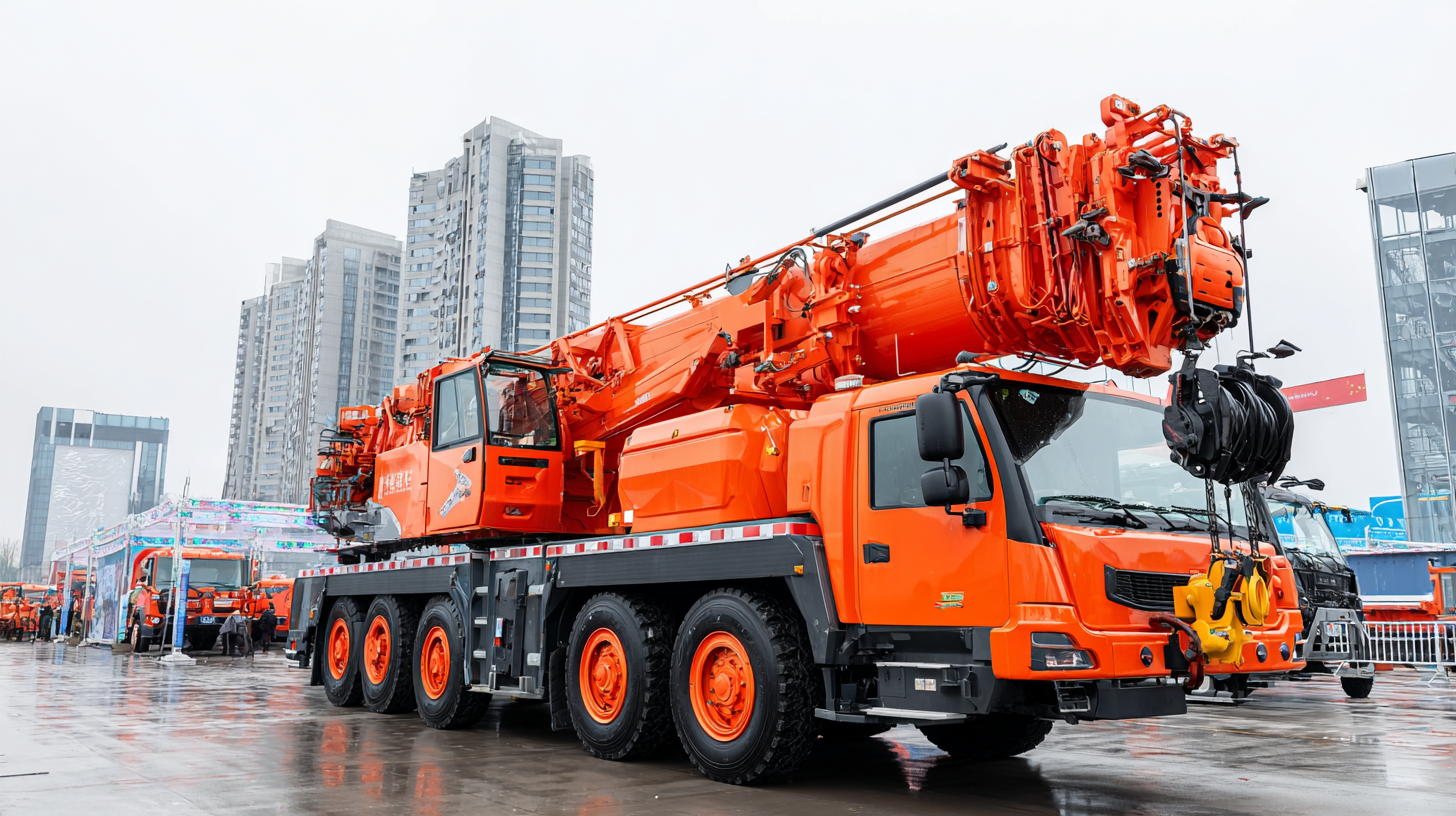
Tips: When considering a telescoping crane for your project, assess the lifting capacity and range of motion to ensure it meets your specific requirements. Additionally, look for cranes that integrate smart technology, as these features can streamline operations and provide real-time data for better decision-making.
The competitive drive is also evident in the strategic partnerships formed between manufacturers and technological firms, leading to the development of hybrid models that combine the benefits of traditional cranes with next-gen electric systems. This shift is making telescoping cranes more sustainable, appealing to environmentally-conscious businesses. As these innovations continue to reshape the market, staying informed about the latest advancements will be crucial for companies looking to invest in telescoping cranes.
The 2025 China Import and Export Fair presents a pivotal opportunity to analyze consumer demand for telescoping cranes. Recent market research indicates that the construction and logistics sectors are the primary drivers of growth for such equipment, with the global telescoping crane market projected to reach USD 4.5 billion by 2026, expanding at a CAGR of 4.1% from 2021. This growth is underpinned by the increasing infrastructural demands in urban areas and the rising popularity of automation in material handling.
Understanding buyer preferences at the trade fair is essential for players in this marketplace. A study by Allied Market Research highlighted that 65% of potential buyers prioritize lifting capacity and operational efficiency when selecting cranes. Moreover, the trend toward sustainable practices is influencing purchasing decisions, with 58% of respondents expressing a preference for energy-efficient models. This knowledge enables manufacturers to tailor their offerings to meet these preferences, thereby positioning themselves competitively in the evolving landscape of crane technology.
| Buyer Region | Preferred Crane Type | Max Load Capacity (Tons) | Budget Range (USD) | Purchase Intent (Within 6 Months) |
|---|---|---|---|---|
| East China | Rough Terrain Crane | 30 | 50,000 - 70,000 | Yes |
| South China | All-Terrain Crane | 50 | 100,000 - 150,000 | Yes |
| North China | Crawler Crane | 20 | 40,000 - 60,000 | No |
| West China | Truck-Mounted Crane | 25 | 30,000 - 50,000 | Yes |
| Central China | Hydraulic Crane | 15 | 20,000 - 35,000 | No |
The regulatory landscape in China plays a crucial role in shaping the market for telescoping cranes. Various safety and operational regulations must be adhered to, influencing manufacturers, distributors, and end-users alike. Key regulations include compliance with the Chinese National Standards (GB Standards) that dictate design, performance, and maintenance requirements for cranes. Additionally, environmental regulations concerning emissions and localized manufacturing standards also impact the sales of telescoping cranes in China. Companies looking to enter this market must carefully navigate these regulations to avoid penalties and gain market trust.
**Tips:** When considering entering the Chinese market, ensure your products meet the GB Standards and evaluate local partnerships that can facilitate compliance. Additionally, staying updated on environmental regulations can provide a competitive edge, as compliance can be a significant differentiator in bids for large projects.
Furthermore, understanding the certification process is essential. Obtaining the necessary certifications can be time-consuming but is crucial for establishing credibility. Engaging with local regulatory bodies and leveraging industry associations may streamline this process. Companies should also invest in workforce training to ensure that operators are well-versed in adhering to safety regulations, which can significantly enhance both operational efficiency and safety compliance in the field.
This bar chart represents the projected market growth for telescoping cranes in China, considering various regulatory factors that may impact sales. The data reflects a potential increase in demand due to upcoming regulations and infrastructure projects.
The 2025 China Import and Export Fair presents a strategic platform for showcasing telescoping cranes, an industry poised for significant growth. According to a recent market analysis report from ResearchAndMarkets, the global market for cranes, including telescoping variants, is projected to reach $40 billion by 2027, growing at a CAGR of 5.2% from 2022. This trend is largely driven by increased infrastructure projects and the surge in demand for advanced construction equipment that can enhance efficiency and safety on job sites.
Positioning telescoping cranes effectively at the fair requires a focus on their unique capabilities, such as versatility and agility in confined spaces. With the Chinese government investing over $4 trillion in infrastructure development under its 14th Five-Year Plan, manufacturers need to highlight how telescoping cranes can meet the demands of urban construction and logistics. Furthermore, leveraging digital platforms to engage potential buyers and providing interactive demonstrations will be crucial in capturing the attention of decision-makers attending the fair. Engaging in discussions about compliance with emerging safety standards and sustainability will also strengthen the positioning of telescoping cranes in this competitive market landscape.
